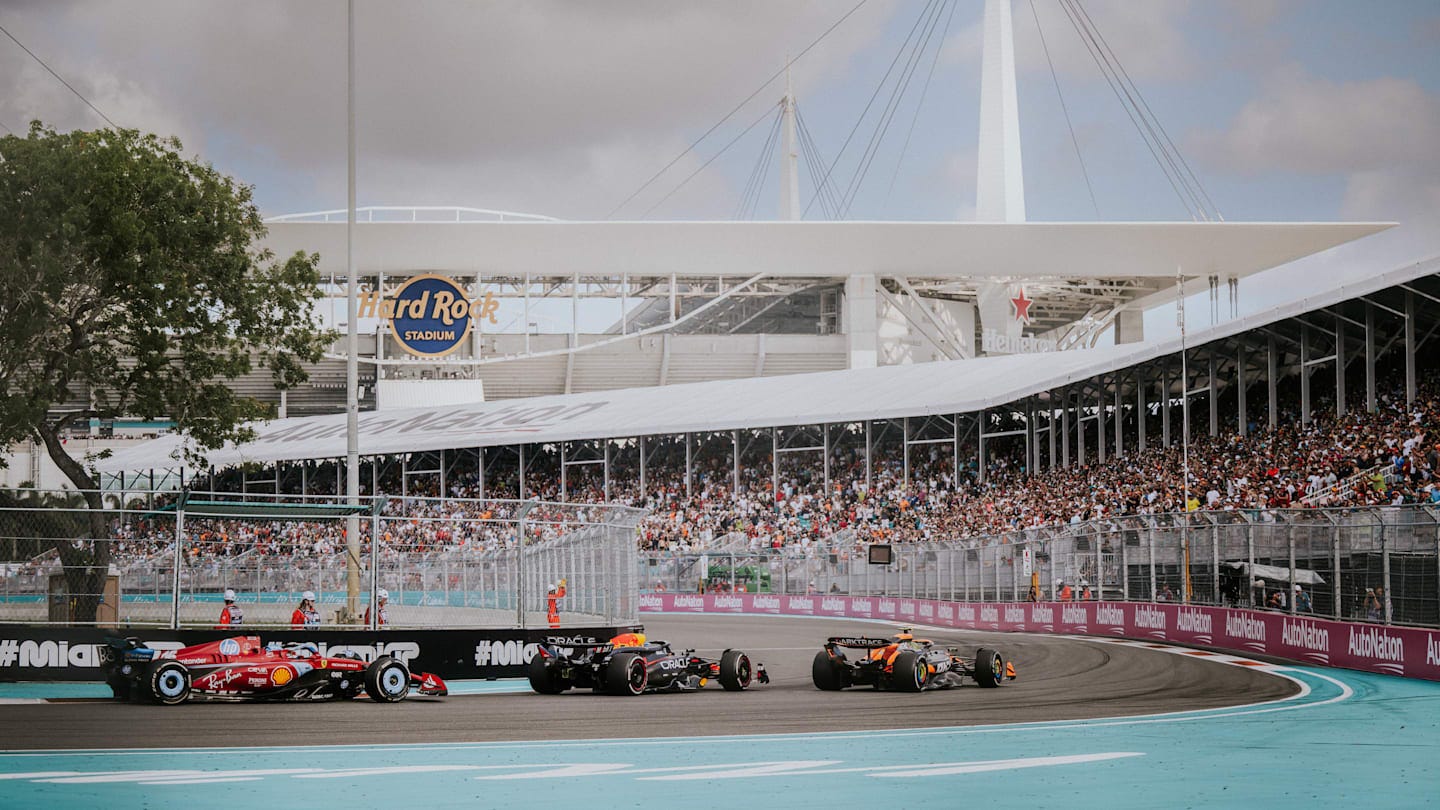The $500 Million Miami Grand Prix
Miami’s F1 weekend showed it's more than just spectacle, it’s a sports business benchmark.
Oscar Piastri crossed the finish line first. Lando Norris followed. George Russell claimed third. But the real winner at the 2025 Miami Grand Prix? South Florida’s economy.
Pre-race estimates projected the 2025 event would generate over $500 million in economic impact for the region, marking a new high point in the race’s short but spectacular history. If those numbers are validated post-race, it would push Miami’s total contribution since 2022 beyond $1.3 billion.
It’s no longer just a sports weekend. It’s a full-scale economic engine.
Miami wasn’t always a sure bet for Formula 1. The circuit was built in the shadow of Hard Rock Stadium, far from the traditional prestige of Monaco or Monza. But it came with a plan: turn the race into an American spectacle that fused culture, entertainment, and global sport.
In 2022, the inaugural Grand Prix delivered an estimated $349 million in impact. That jumped to $449 million in 2023. Now, with projections for 2025 landing at over $500 million, Miami is setting the standard for what a modern Grand Prix can deliver, on and off the track.
Those figures reflect a broader shift: Formula 1’s push into the U.S. isn’t about replicating Europe. It’s about creating something uniquely American, and Miami has fully understood the brief.
While the racing was front and centre, Piastri’s win over Norris, securing a McLaren 1-2, Miami’s race weekend felt like a global festival.
There were performances from A-list musicians. Branded parties from luxury houses and tech firms. Custom art installations. Exclusive drop-ins from music, fashion, and film royalty. At times, the race almost felt secondary to the spectacle, but that’s the point with this particular event. It’s built for both hardcore F1 fans and the party scene of the city.
Formula 1, under Liberty Media, isn’t just chasing viewership. It’s selling aspiration. And nowhere does that more effectively than Miami.
Follow me for more sports and life updates: Instagram
Beyond the hype and headlines, the 2025 Miami Grand Prix did real work on the ground, especially in Miami Gardens, the neighbourhood it occupies.
An estimated 18,000 credentialed workers supported the event, many of them locals. From logistics and event setup to food vendors and ushers, the employment footprint is meaningful. For all the justified scrutiny around mega-events displacing locals or over-commercialising public space, Miami’s GP is at least trying to build bridges.
In a show of confidence, Formula 1 signed a 10-year contract extension with the Miami Grand Prix, taking it through to 2041, the longest contracted event on the F1 calendar.
That kind of runway is rare in elite motorsport, and it gives both organisers and city officials the breathing room to invest further: better infrastructure, more job training pipelines, and deeper community integrations. It also confirms Miami as a strategic linchpin in F1’s U.S. playbook, alongside Austin and Las Vegas.
“Securing a 10-year extension with Formula 1 through 2041 is an extraordinary milestone for all of us at South Florida Motorsports and a true testament to the hard work of our team, the strength of our partnerships, the support of our community and the growth of the sport in the United States,” said Tom Garfinkel, Managing Partner of the FORMULA 1 CRYPTO.COM MIAMI GRAND PRIX.
If projections hold and economic validation follows, 2025 will mark Miami's most commercially successful race yet. But the opportunity now is less about breaking records and more about refining the blueprint.
Expect more global brand involvement, possibly from luxury and tech sectors that want a slice of the F1 halo without committing to full-season team sponsorships. Expect increased emphasis on immersive, fan-first experiences. And expect more tension, too, as the race walks the line between elite exclusivity and civic responsibility.
Stefano Domenicali, President and CEO of Formula 1, said: “In just three years, the Miami Grand Prix has established itself as one of the most important and spectacular events on our calendar, an extraordinary example of quality and vision that truly represents the spirit and ambition of Formula 1 in the United States.”
It’s pretty clear: the Miami Grand Prix is no longer proving itself. It’s setting the example.
Thank you for reading, David Skilling.
Follow me on LinkedIn | X | Instagram
If you hit the like button, you’ll be doing me a huge favour, and if your business needs sports writing, feel free to get in contact.
If you know someone who will enjoy this article, please share it with them.




